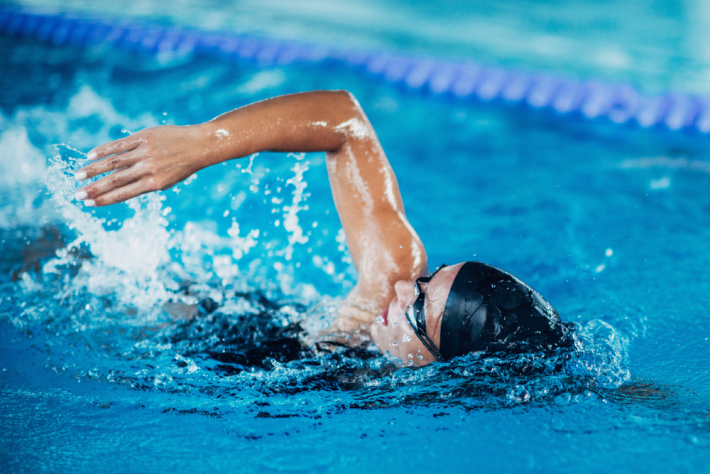
Swimming is a great full body workout that anyone can benefit from, including people with weak joints. While chucking a few laps a couple times a week probably won’t have any negative side effects, professional, frequent, and long distance swimming can cause the unpleasant condition known as “swimmer’s shoulder”.
Luckily, there are measures you can take to prevent swimmer’s shoulder and train up and down the black line without any discomfort. Read on to discover our recommended tips to happy swimming!
What is swimmer’s shoulder?
Also called shoulder impingement, swimmer’s shoulder is a condition caused by repetitive shoulder joint rotation. Professional and frequent swimmers perform hundreds or even thousands of rotations in a short period of time, which can strain and inflame the joint’s pain sensitive structures( eg tendons and bursa), especially if posture and technique need improvement.
The shoulder is a very mobile joint, which means it needs proper muscle and ligament support. Unfortunately, there are many factors that can lead to overworked and painful ligaments and tendons such as:
- Poor technique
- Over-training
- Fatigue
- A previous shoulder injury
The most common swimmer’s shoulder symptoms are:
- Reduced range of motion
- Increased joint laxity
- Rotator cuff and shoulder girdle muscle imbalance
- Discomfort and inflammation
How to prevent swimmer’s shoulder
The best way to minimise the risk of injury is to maintain proper posture – both in the pool and out. This is easier said than done, considering we spend a big chunk of our day sitting down and, many times, slouching.
Here are a few tips that will help you gain better posture when swimming.
Sleep on your back
You might prefer sleeping on your side, but that’s not a good idea if your shoulders are sore after a long swim. The pressure you put on them will only make the inflammation worse, so it’s best to develop a habit of sleeping on your back, which is also better for your overall spine health.
Pro tip: to perfectly align the shoulders into their sockets, sleep with your arms crossed on your chest. If you’re still experiencing pain or discomfort, slightly elevate the elbows with some pillows.
Strengthen your rotator cuffs
This is a prevention measure that goes a long way, but only when you also work on other key areas of the body, like strengthening the upper back muscles. Exercises to improve scapular muscle imbalance and posture are also helpful in improving impingement symptoms.
Many swimmers do internal and external rotator cuff strengthening exercises with bands as a way to keep the swimmer’s shoulder at bay. You’ll notice a big difference if you start including these as a warm up before your swim.
Improve your swimming technique
The most critical preventative measure you can take against shoulder injury is maintaining great posture and technique when you swim. Remember that swimming is a form of resistance training, much like weight lifting. Just like at the gym, good form is essential for keeping injuries at bay.
Achieving proper technique should be your main goal before you even consider increasing the intensity or duration of your training. Consulting a swimming coach can be help as they can identify and correct faulty technique or training habits.
Swimmer’s shoulder is a condition that can be prevented, but injury can happen despite our best efforts. That’s when you need the help of an experienced physiotherapist. We would be happy to assist you in your recovery, so don’t hesitate to get in touch with the best physio in Beechboro.
